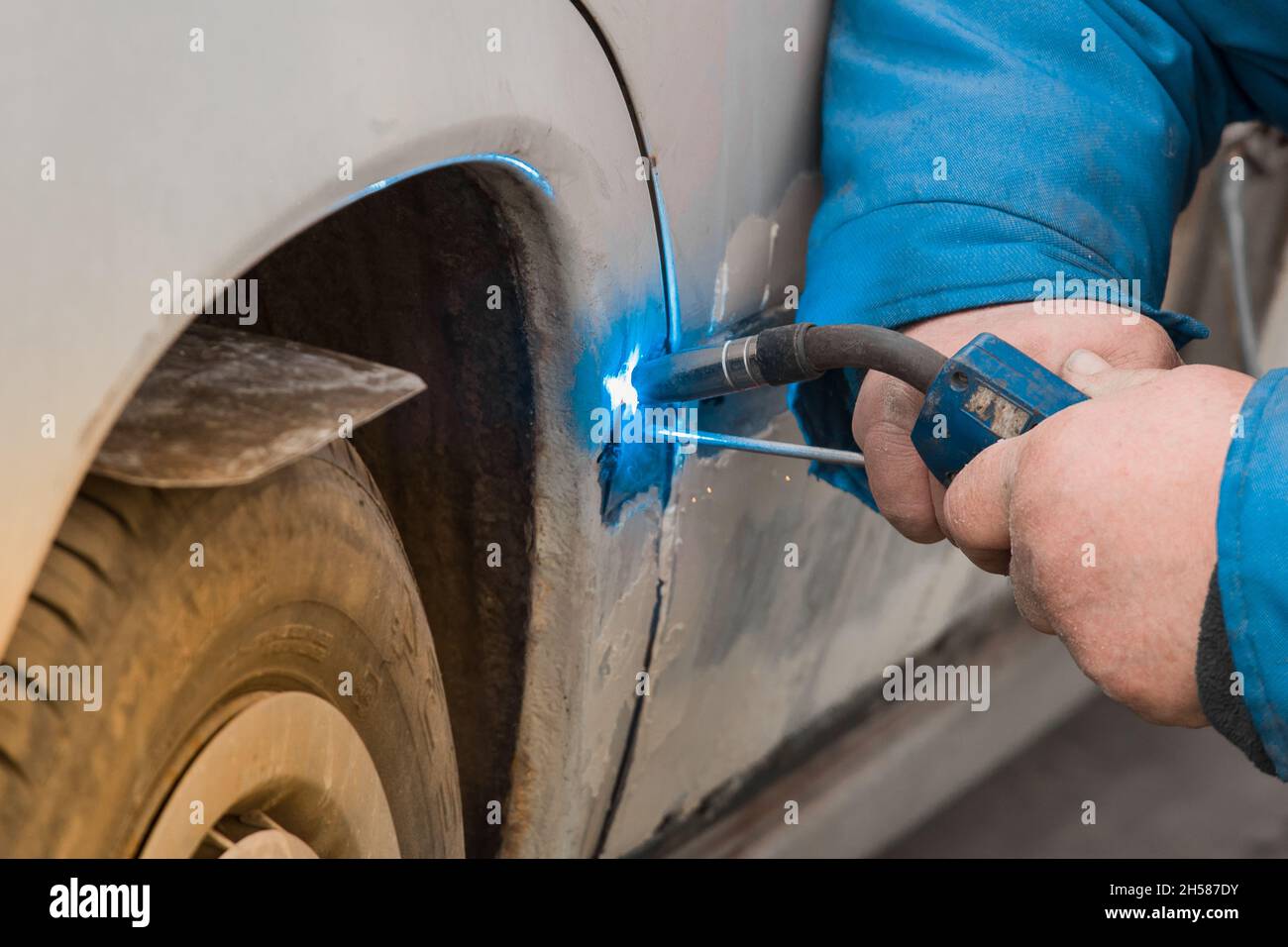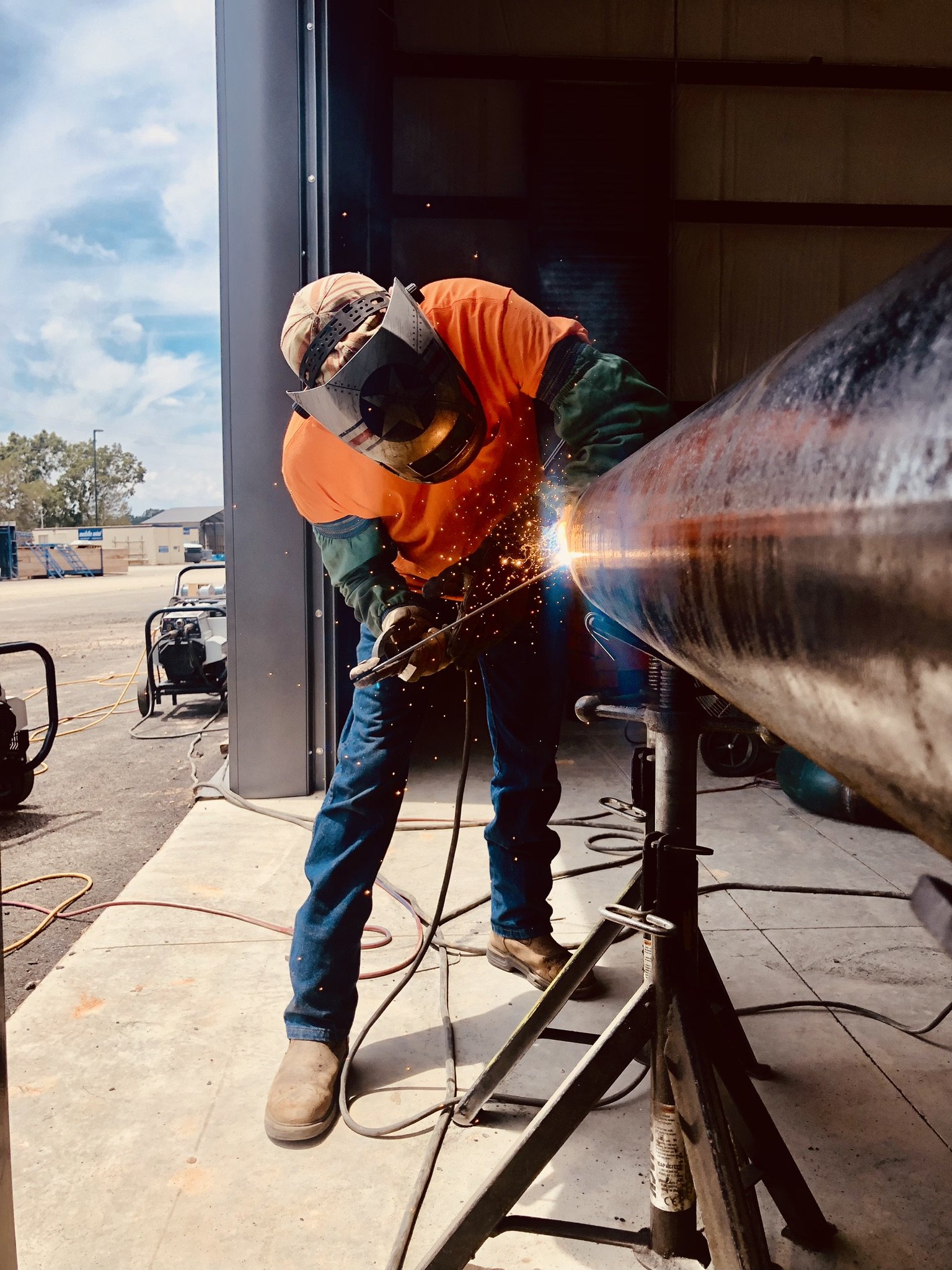All About Welding: Trick Insights Into Techniques and Ideal Practices for Success
Welding includes a selection of methods, each fit for particular materials and applications. Understanding these methods, such as GMAW, SMAW, and TIG, is crucial for achieving ideal outcomes. The appropriate devices and safety and security techniques can not be forgotten. As prep work and repairing play crucial roles in the welding procedure, understanding these elements can greatly enhance the quality of the end product. What are the vital variables that assure an effective weld?
Comprehending Different Welding Strategies
Welding techniques encompass a variety of approaches, each suited to particular applications and products. Amongst one of the most common techniques are Gas Metal Arc Welding (GMAW), Secured Steel Arc Welding (SMAW), and Tungsten Inert Gas Welding (TIG) GMAW, additionally known as MIG welding, is preferred for its speed and flexibility, making it ideal for slim materials. SMAW, or stick welding, is preferred for its simpleness and efficiency in outside atmospheres, particularly with thicker steels. TIG welding provides accuracy and control, making it suitable for elaborate job and non-ferrous steels (Belgrade Fabrication). Each technique has its unique benefits and factors to consider, enabling welders to pick the very best method based on the job's requirements, material kind, and desired results. Comprehending these techniques is essential for effective welding
Necessary Welding Equipment and Devices
While numerous welding methods require details abilities, the ideal equipment and tools are similarly vital for attaining top quality results. Essential welding devices consists of welding devices, which vary relying on the strategy-- such as MIG, TIG, or stick welding. Safety equipment, including headgears, aprons, and handwear covers, guarantees security and comfort throughout the procedure. Additionally, clamps and fixtures aid secure materials in position, making certain accuracy in welds. Consumables like welding rods, cord, and protecting gas are additionally essential elements that influence the high quality of the weld. Tools such as grinders and cutters facilitate surface preparation and post-weld finishing, adding to a specialist end result. Investing in top notch devices eventually improves the effectiveness and efficiency of welding jobs.
Safety Practices in Welding
Correct security practices are important in the welding sector to secure workers from potential dangers. Welders should use appropriate personal protective devices (PPE), including headgears with appropriate shading, handwear covers, and flame-resistant clothes. Sufficient ventilation is important to decrease exposure to dangerous fumes and gases produced throughout the welding procedure. Furthermore, employees must be learnt the correct handling of welding tools to stop crashes. Fire safety steps, such as keeping combustible materials far from the welding area and having fire extinguishers conveniently available, are necessary. Regular examinations of equipment and workspaces can assist identify possible hazards before they cause accidents. By adhering to these security methods, welders can create a safer working environment and reduce dangers connected with their trade.
Readying Products for Welding
Preparing materials for welding is a crucial action that considerably influences the high quality and honesty of the end product (Belgrade). Appropriate prep work entails cleansing the surface areas to get rid of contaminants such as oil, dust, and corrosion, which can compromise the weld. Methods such as grinding, sanding, or making use of solvents are commonly employed to achieve a clean surface. Additionally, ensuring that the products fit together comfortably is essential; gaps can result in weak welds. It's likewise crucial to take right into account the positioning and positioning of the components, as this will certainly affect the convenience of welding and rutile electrode the last end result. Ultimately, picking the ideal filler product and making certain compatibility with the base steels is important for achieving solid, long lasting welds
Tips for Getting High-Quality Welds
Accomplishing high-quality welds needs attention to information and adherence to best methods throughout the welding procedure. Appropriate joint prep work is important, ensuring surfaces are tidy and free from impurities. Picking the proper filler product and welding technique based on the base metals is critical for ideal bonding. Preserving regular travel speed and angle while welding can advertise and protect against flaws harmony. Additionally, managing warmth input is essential; extreme warmth can lead to warping and compromised joints. On a regular basis examining the welds during the procedure allows for immediate modifications if necessary. Utilizing proper post-weld treatments, such as cleaning and stress and anxiety alleviation, can boost the sturdiness and integrity of the weld, inevitably making certain a successful outcome.
Troubleshooting Usual Welding Issues
Welding usually offers obstacles that can impact the quality and integrity of the end product. Typical problems such as porosity, irregular weld beads, and overheating can emerge, each needing certain troubleshooting methods. Comprehending these problems is crucial for welders to boost their skills and achieve ideal results.
Porosity Issues Explained
Although porosity can usually be forgotten, it remains an important issue in welding that can jeopardize the honesty of an ended up product. Porosity describes the presence of tiny gas pockets within the weld grain, which can weaken the joint and lead to premature failing. This problem typically emerges from contaminants, dampness, or incorrect shielding gas coverage throughout the welding procedure. To minimize porosity, welders ought to confirm that the base products are dry and clean, use appropriate protecting gases, and keep regular welding parameters. On a regular basis evaluating the tools and atmosphere can additionally help determine possible problems before they show up in the weld. Resolving porosity effectively is crucial for attaining strong, long lasting welds that meet high quality criteria.

Irregular Weld Beans
Inconsistent weld grains can greatly affect the quality and toughness of an ended up product. Various factors add to this issue, consisting of improper travel rate, inaccurate amperage setups, and irregular electrode angles. When the welder relocates too swiftly, a grain may show up narrow and do not have penetration, while relocating also slowly can trigger extreme build-up. Furthermore, using the incorrect amperage can cause either undercutting or too much spatter, both cswip 3.0 of which compromise weld integrity. The welder's method, such as inconsistent torch activity, can additionally lead to uneven grain appearance. To reduce these troubles, welders ought to concentrate on preserving steady, controlled movements and making certain appropriate tools settings to attain harmony in their welds. Consistency is key to accomplishing solid and dependable welds.
Overheating and Warping Issues
Extreme heat during the welding procedure can lead to significant overheating and contorting concerns, influencing the structural stability of the workpiece. These issues commonly manifest as distortion, which can endanger alignment and fit-up, making additional setting up testing. Elements adding to overheating include the selection of welding parameters, such as voltage and travel speed, in addition to the kind of material being welded. To mitigate these issues, welders need to preserve constant traveling rate and ideal warm input while monitoring the work surface temperature. Furthermore, preheating or post-weld heat therapy can aid relieve stress and anxieties triggered by quick cooling - Fabrication. Normal assessment and adherence to best methods are essential in avoiding overheating and guaranteeing the longevity and integrity of welded structures
Often Asked Questions
What Are the Profession Opportunities in the Welding Market?
The welding market supplies varied career chances, including placements as welders, engineers, teachers, and inspectors. Professionals can function in manufacturing, construction, aerospace, and vehicle industries, taking advantage of solid demand and competitive incomes in numerous duties.
Exactly How Can I Enhance My Welding Rate Without Compromising High Quality?
To improve welding speed without compromising quality, one should exercise efficient techniques, preserve equipment, enhance settings, and boost hand-eye sychronisation. Routine training and looking for responses can additionally considerably contribute to achieving much faster, high-quality welds.
What Accreditations Are Offered for Welders?
Various certifications exist for welders, including those from the American Welding Culture (AWS), the National Facility for Construction Education And Learning and Study (NCCER), and various industry-specific organizations. These qualifications boost employability and demonstrate skill effectiveness.
Just How Does Welding Affect the Residences of Metals?
Welding affects the residential or commercial properties of metals by changing their microstructure, which can bring about adjustments in ductility, toughness, and hardness. Warmth input and air conditioning prices during the process substantially impact these product features.
Can I Bonded Dissimilar Metals Together?

Comments on “What to learn about overheating prevention from Montana Mobile Welding and Repair”